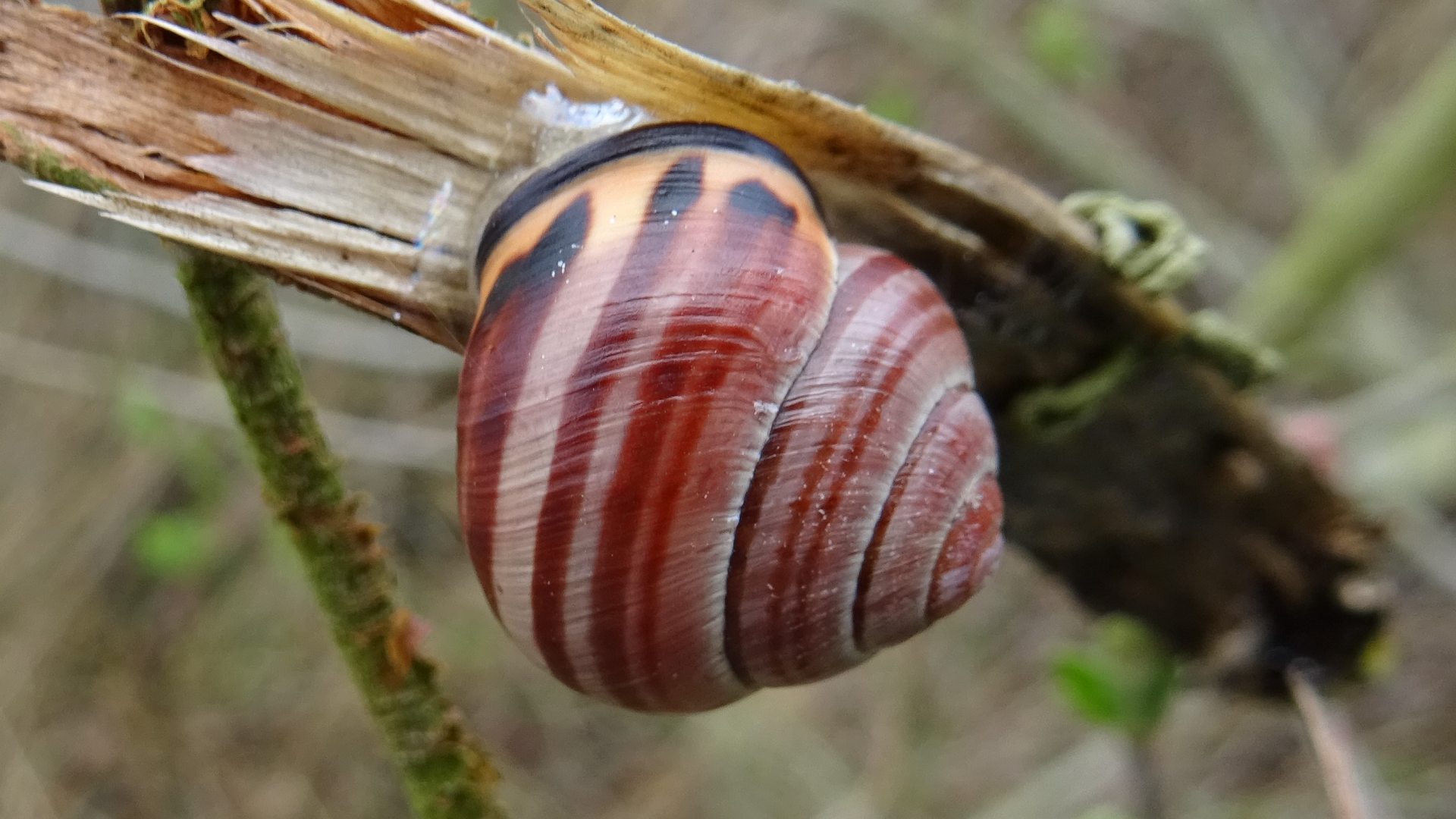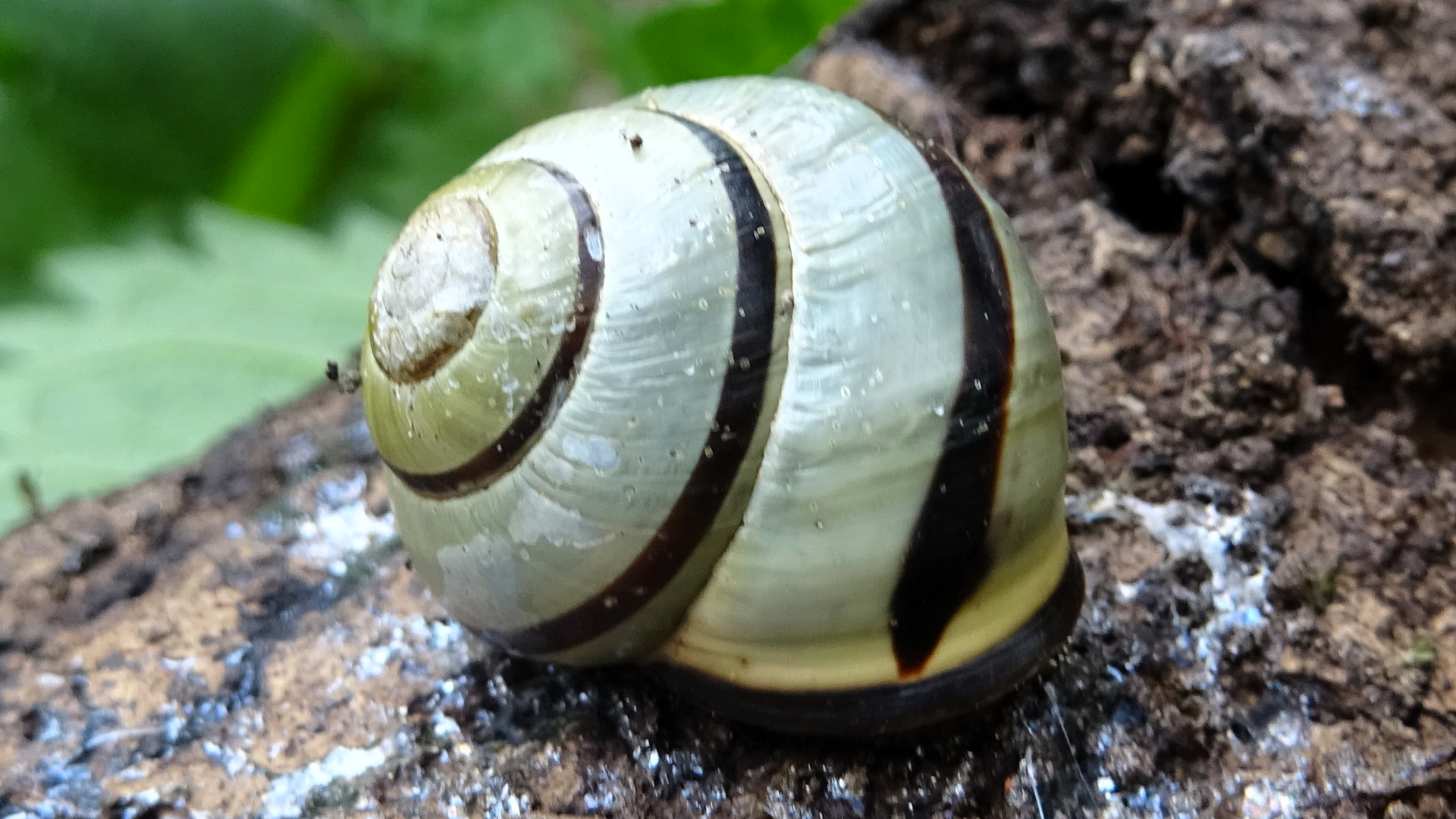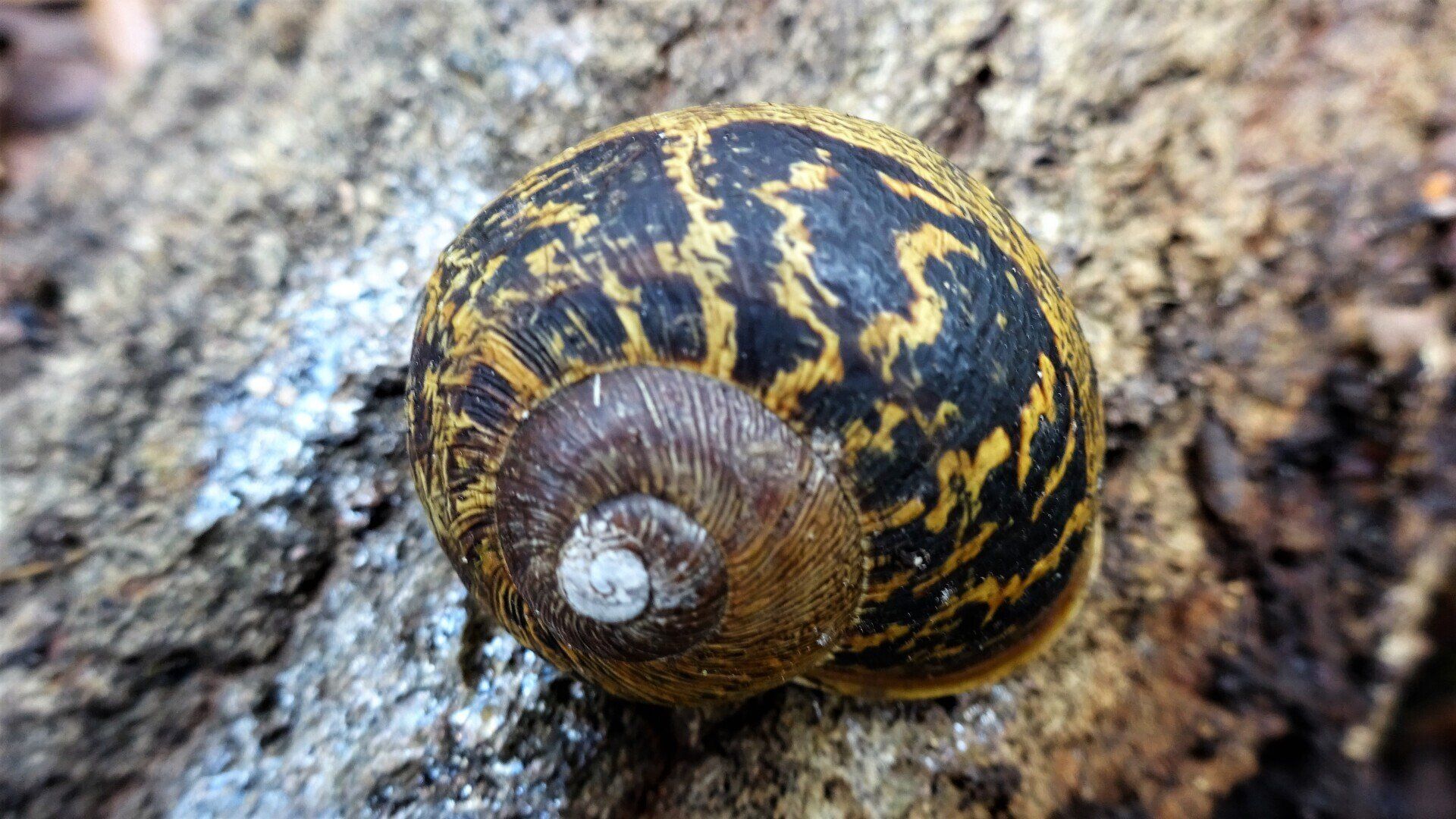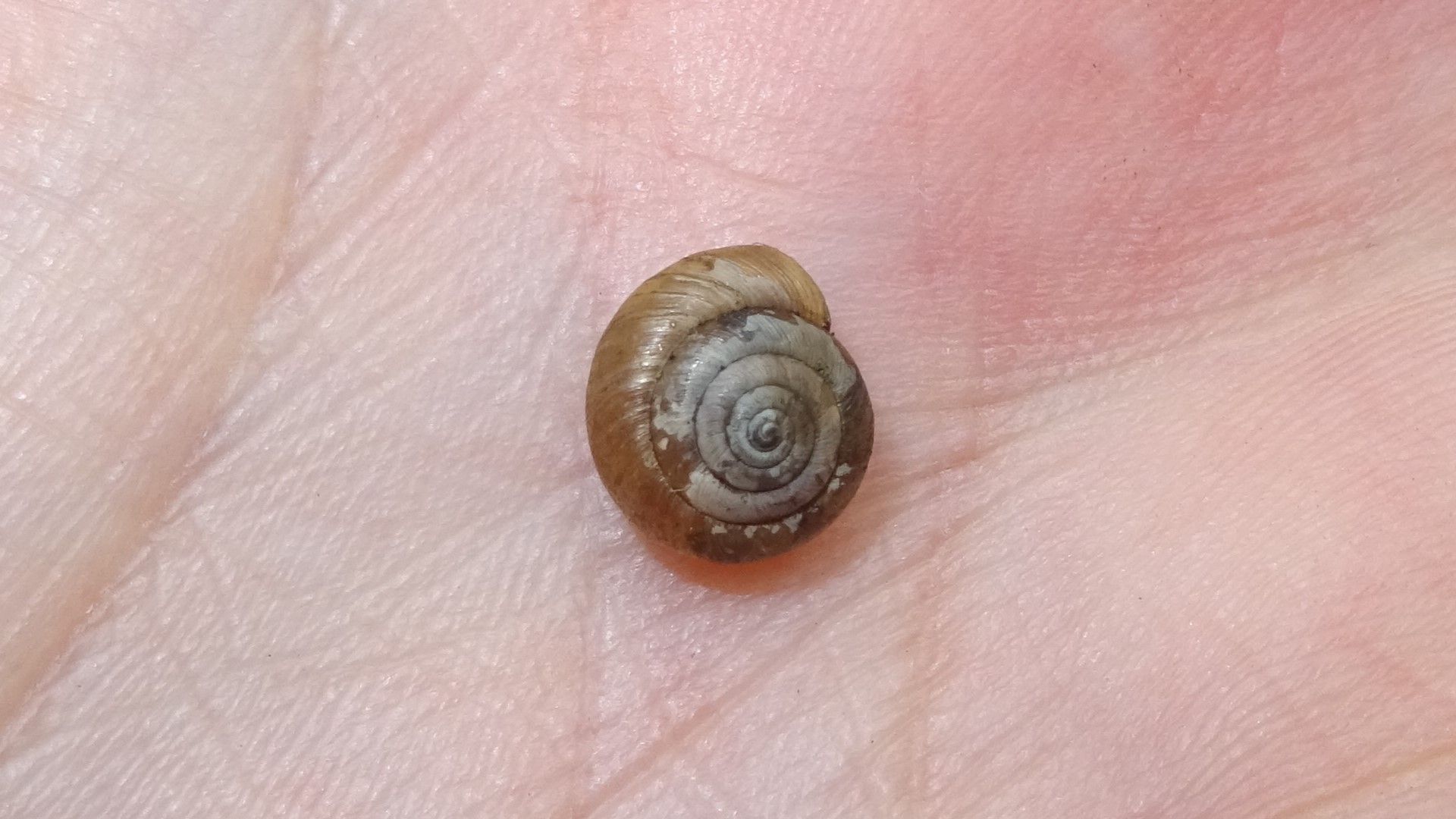

MOLLUSCS
SNAILS
Land snails are mainly nocturnal and are seen more at night or very early in the morning. They need to stay moist in order to survive so normally stay out the sun and have a preference for damp, dark habitats. They hibernate during winter. In soaring temperatures they bury themselves underground and wait for cooler conditions to return.
Large tentacles at the top of the head contain the snail's eyes. The mouth is located in the centre of the head below the lower set of tentacles which are used to smell and feel for food. They move around on a single muscular foot leaving a trail of slime in their wake. Snails are invertebrates meaning they do not have a backbone. They retreat completely into the shell when sensing danger.
Brown-lipped Snails
have shells that come in many colours and have a brown lip at the opening. This species has a preference for damp habitats. It is vital for snails to stay moist. They retreat into the shell when too dry to maintain moisture.
Common Garden Snail
has a thick shell usually brown with a variable yellowish-brown zig-zagging lines and a wrinkled surface. The shell has 4½ to 5 whorls and grows to a height of 25-35mm. It is a nocturnal species that appears during in the day after rain. Often found in gardens, hedgerows and on rocks.
Do you know? A snail eats as it travels, the tongue has a coating of thousands of teeth-like structures (radula) which scrap food particles from the surface and grind the food. Preferred foods include: plants, lichens, algae, and limestone.
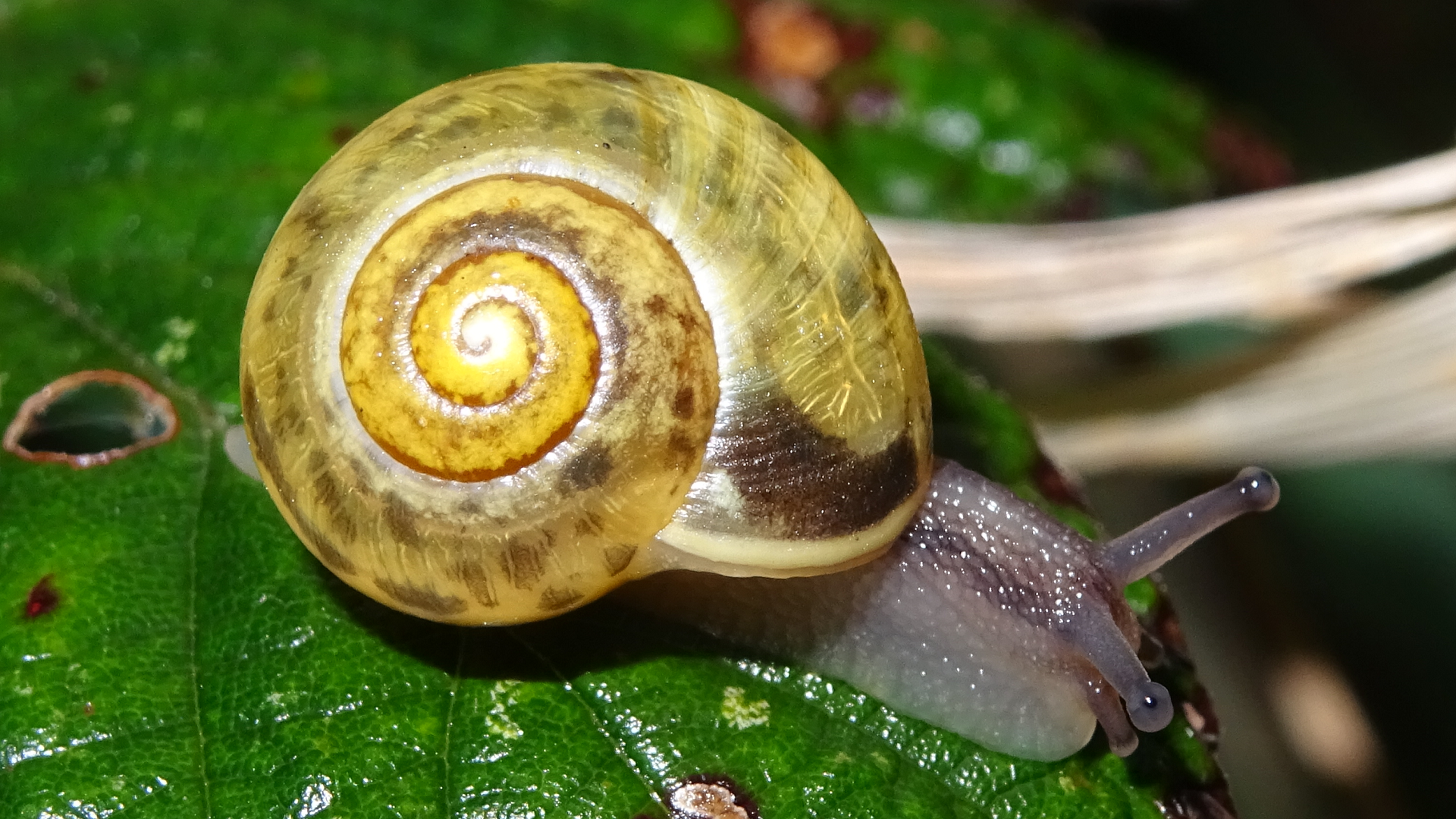
Slide title
White-lipped Snail Cepaea hortensis
©Raymond Small TQ4692 10/042020
Button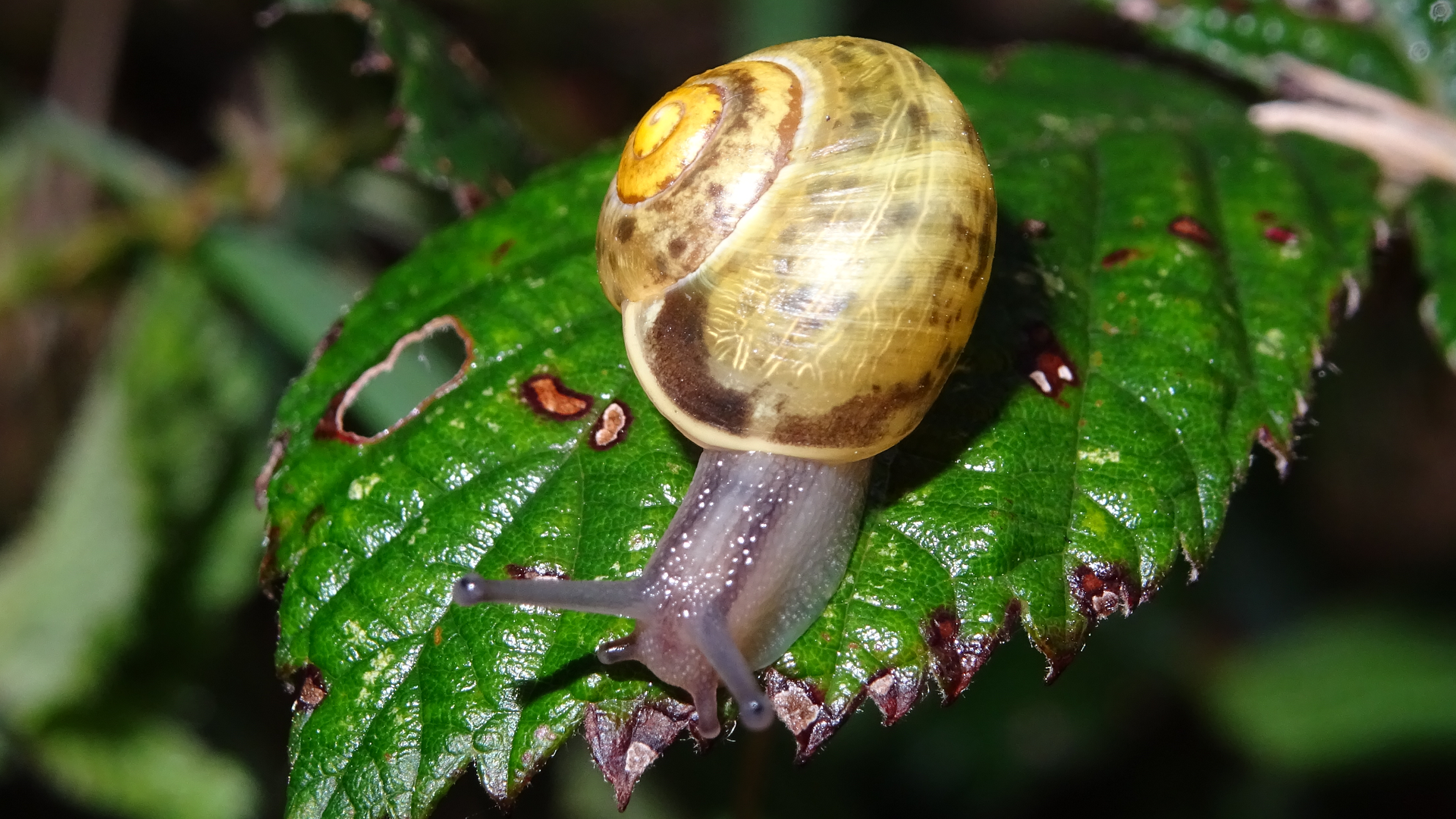
Slide title
White-lipped Snail Cepaea hortensis
©Raymond Small TQ4692 10/042020
Button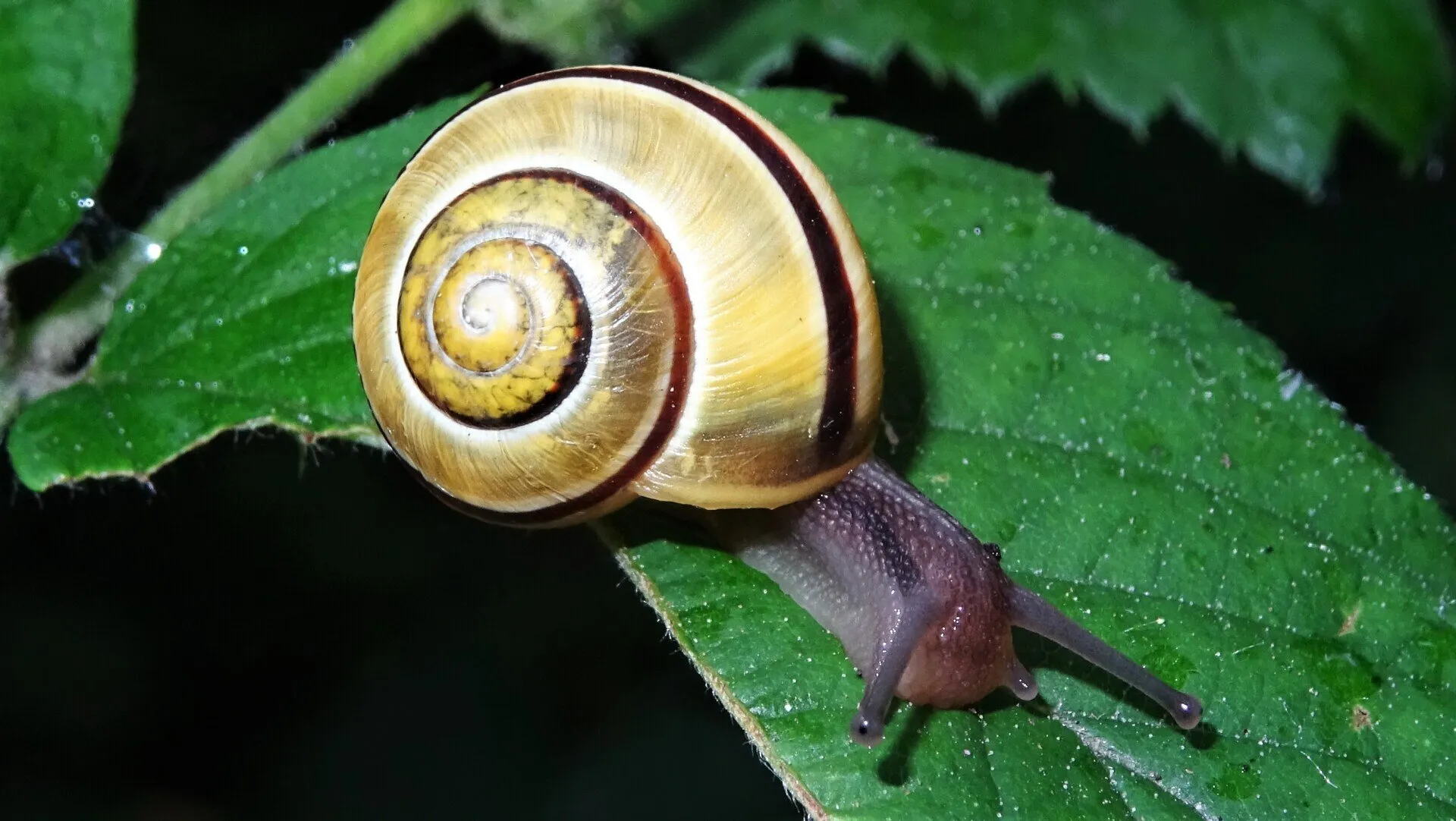
Slide title
White-lipped Snail Cepaea hortensis
©Raymond Small TQ4793 18/06/2022
Button
White-lipped Snails have glossy smooth banded shells measuring up to about 15mm in height. There is usually a conspicuous white lip around the shell opening and there can be up to 5 variable dark spiralling bands. The shell itself is often yellow, but this can vary. Often found on nettles especially in damp locations. They are capable of self reproduction and come equipped with both male and female organs.
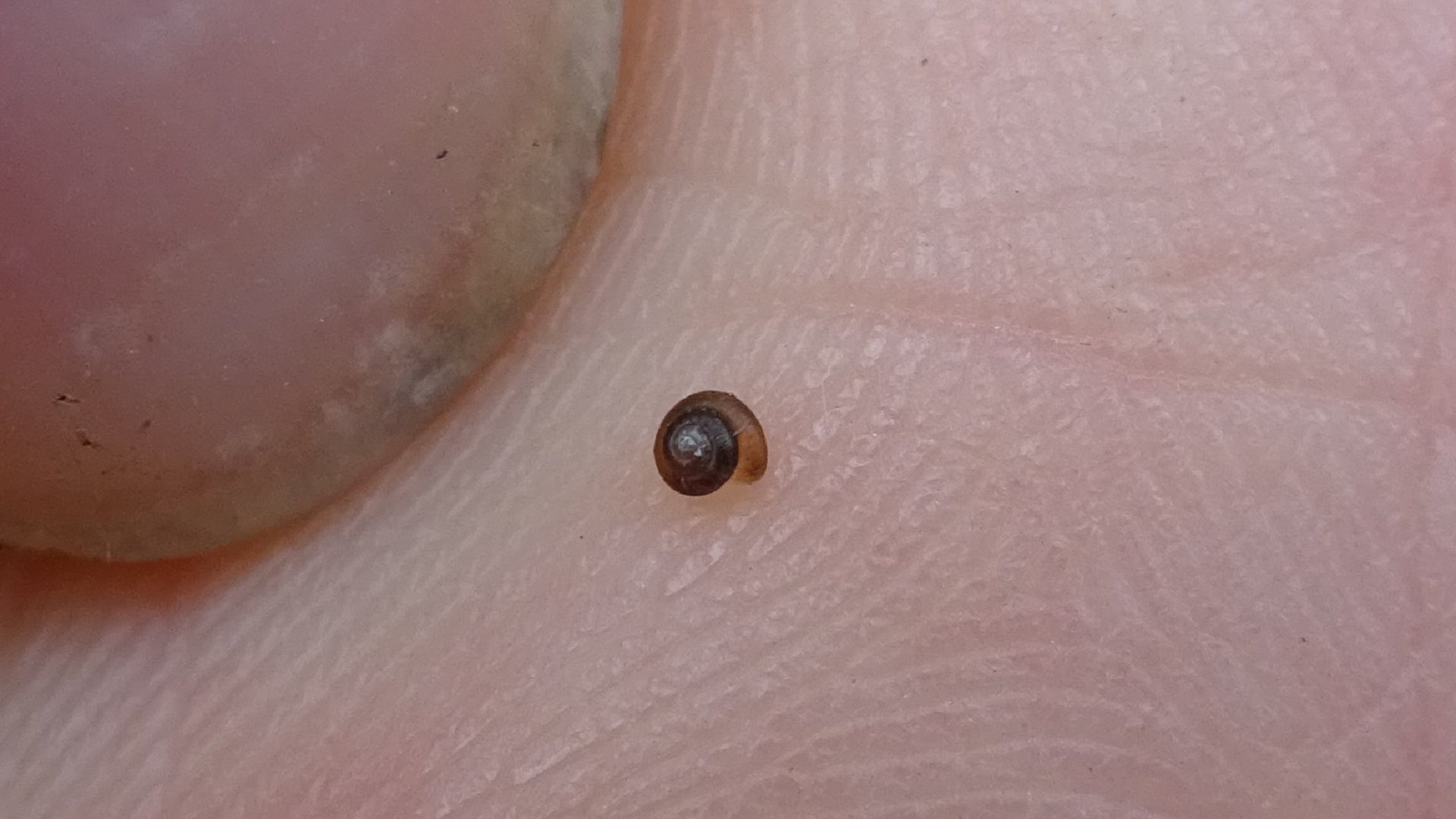
Slide title
Dwarf Snail Punctum pygmaeum
©Raymond Small TQ4793 05/05/2019
Button
Dwarf Snail Punctum pygmaeum is the smallest species of British land snail. This specimen was found by mollusc Essex Field Club recorder Simon Taylor at Lambourne End. Adults only grow to a diameter of 1.5 mm. The growth rings are raised into sharp ridges.
Do you know? A snail spends a lifetime carrying a home on its back in the form of a whorled shell consisting mostly of calcium carbonate.
Slide title
Garlic Snail Oxychilus alliarius
©Raymond Small TQ4892 05/05/2019
Button
Garlic Snail
Oxychilus alliarius
has a glossy translucent brown shell measuring 6-8 mm which is closely coiled with a low spire. The snail itself is bluish-grey. If picked up the snail produces a secretion that smells strongly of garlic. There are other species that release a weaker garlic aroma so it was good that recorder Simon Taylor was on site to confirm identification. If the last part of the mantle within the shell was dark then it would be
Oxychilus navarricus helveticus, which also smells of garlic albeit slightly less strongly.
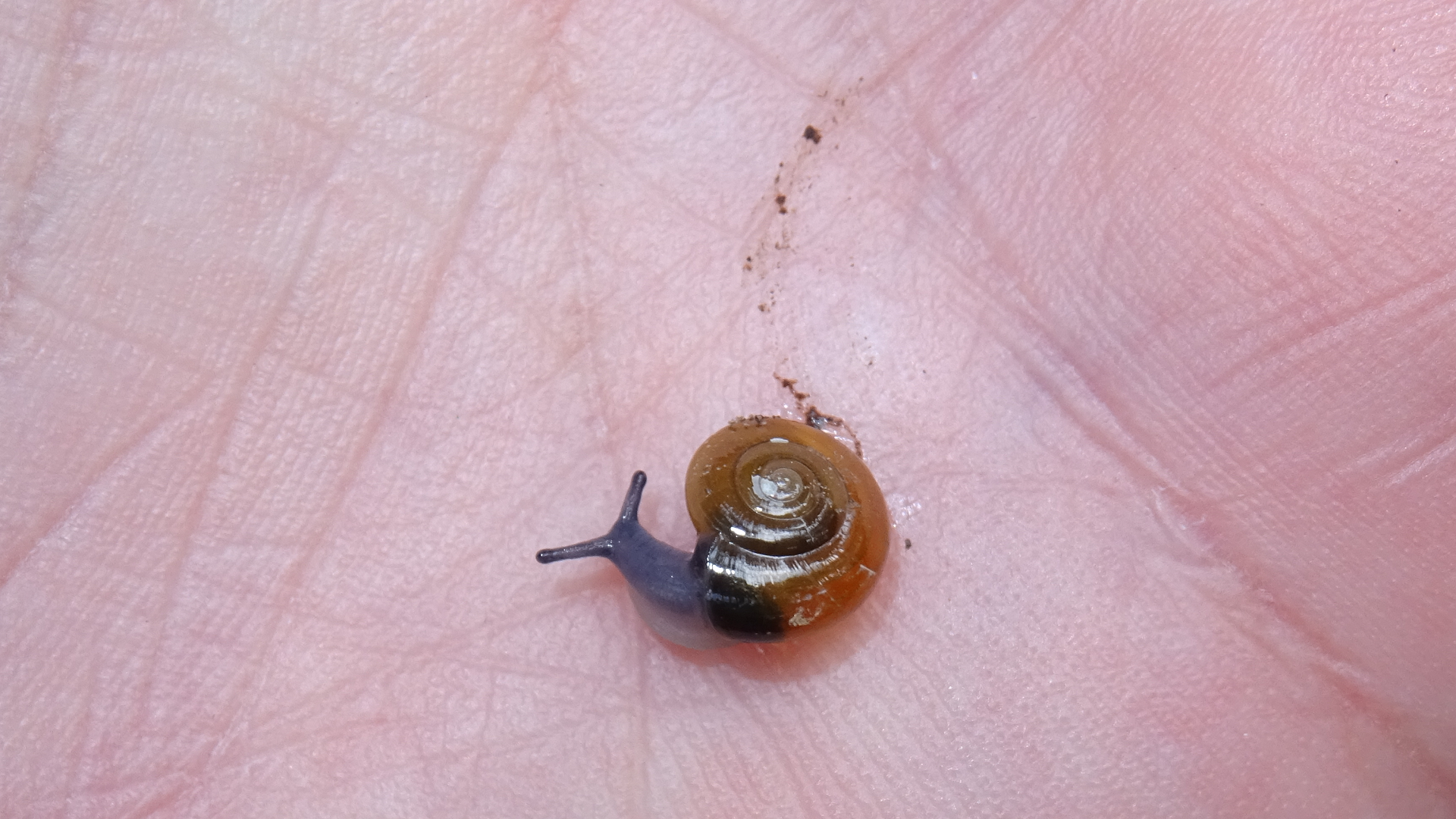
Slide title
Glossy Glass Snail Oxychilus navarricus
©Raymond Small TQ4792 26/03/2021
Button
Glossy Glass Snails
Oxychilus navarricus are associated with woodland where they are found under logs throughout the year. The mantle can be seen through the brown shell creating a distinctive black band near the opening. Measuring 8-10 mm. the shell has a slightly raised spire. The body is blueish-grey. The shape and lustre are characteristic of
Oxychilus and the dark mantle visible through the shell tends to be the "tell" for
navarricus. It can often have a slight smell of garlic, far less than
alliarius though.
Do you know? Snails cannot hear.
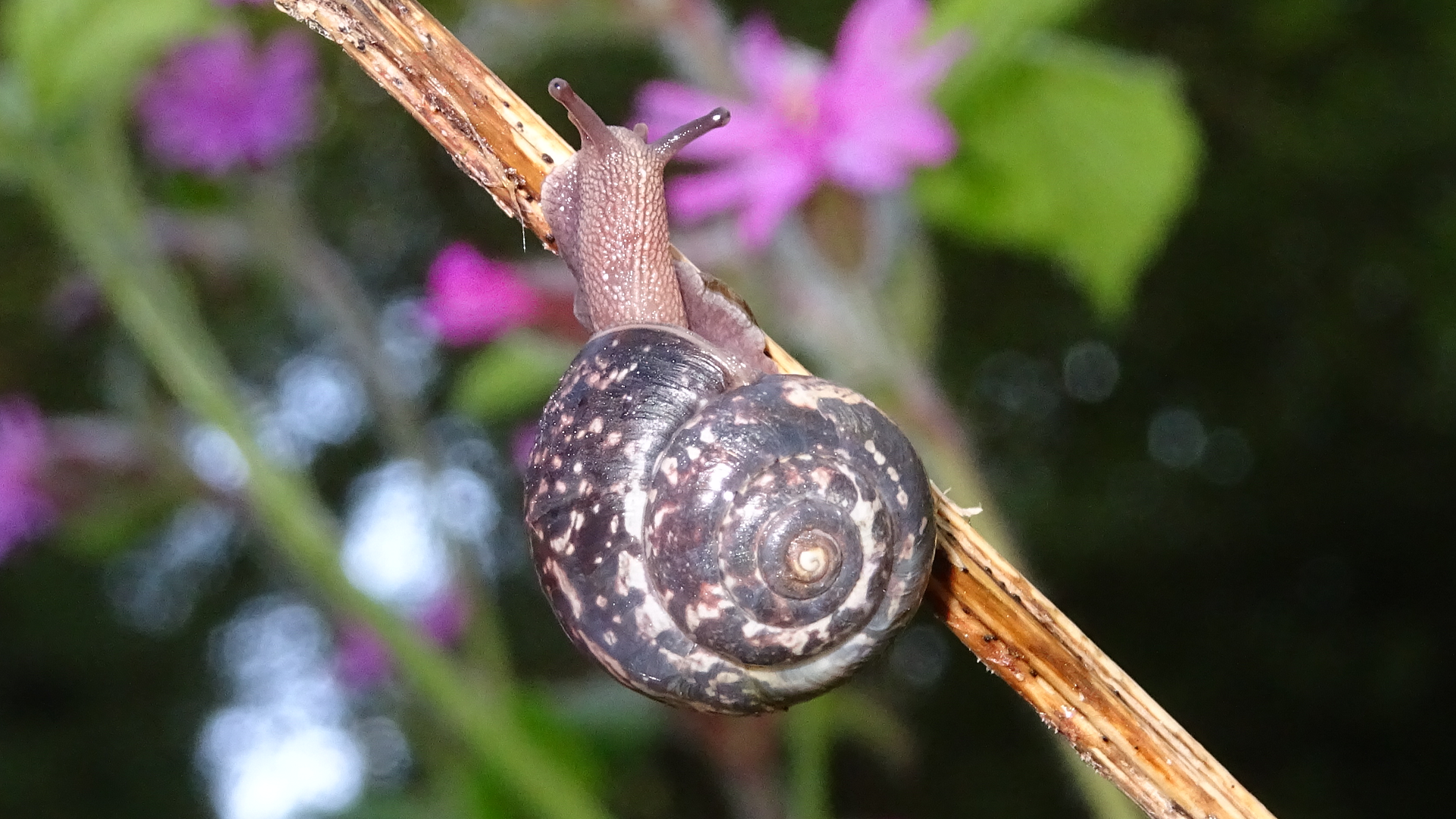
Slide title
Kentish Snail Monacha cantiana
©Raymond Small TQ4793 07/05/2020
Button
Kentish Snail
Monacha cantiana (up to 16mm) is a species often found on hedgerows throughout the year. The mottled-white greyish-brown shell often has a light spiral band around its circumference. The snail's body is light brown with a darker skirting. The tentacles are darker than the body. Younger snails of this species have hairy shells; the hairs usually get rubbed off over the course of time. Very common in Essex despite the name.
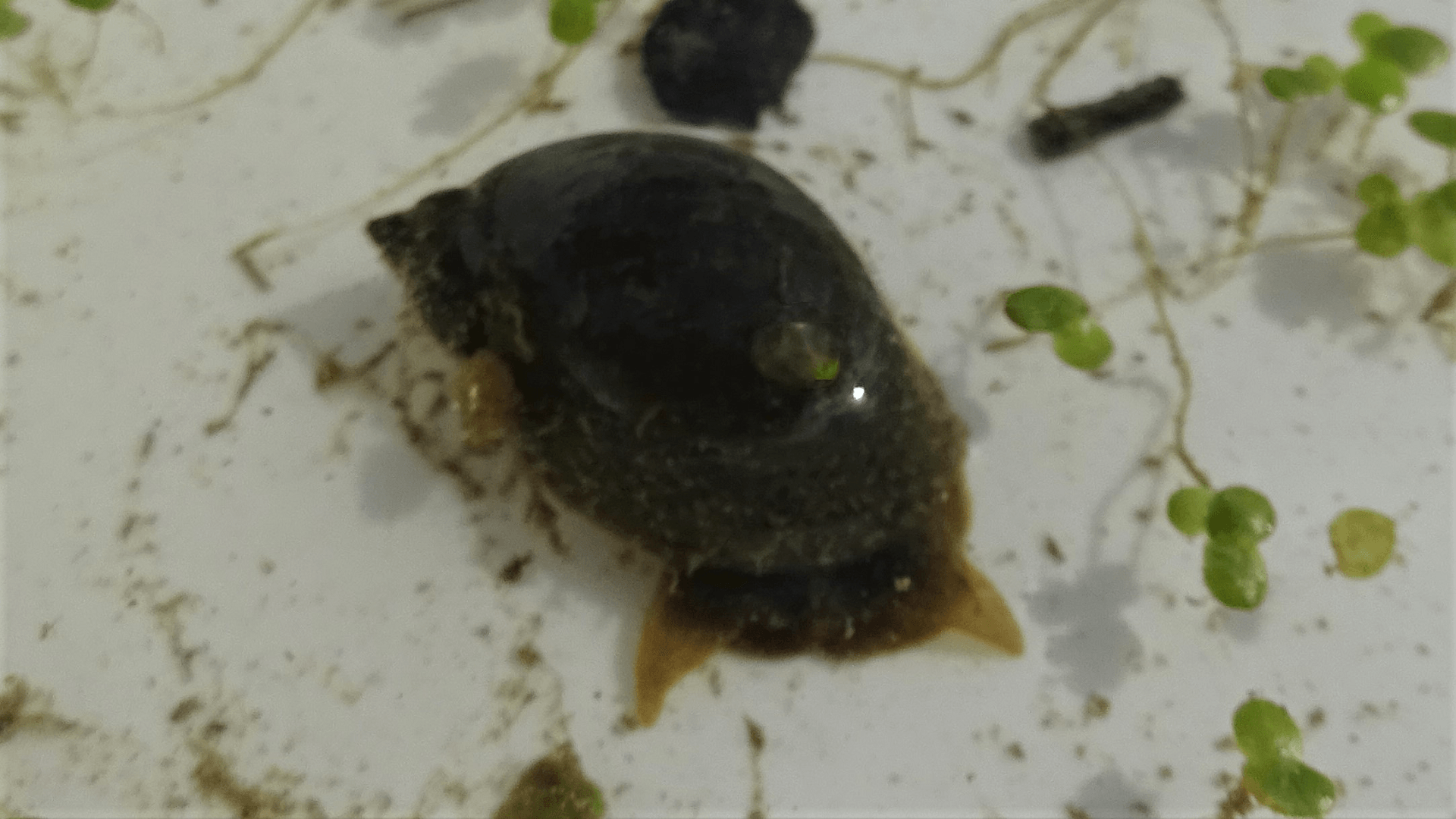
Slide title
Wandering Pond Snail Lymnaea
©Raymond Small TQ4894 15/08/2017
Button
Wandering Pond Snails are small air-breathing freshwater pond snails. Their brownish shells are tall-spired with a very large opening. They do not stray far from water.
Do you know? A snail can crawl over sharp razor blades without getting cut because of the protective slimy mucus.
© hainaultforest.net. All rights reserved.
